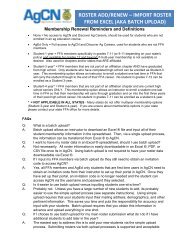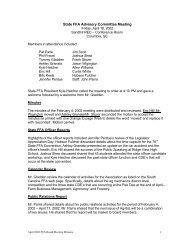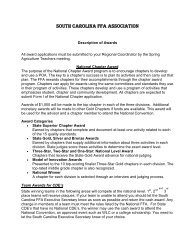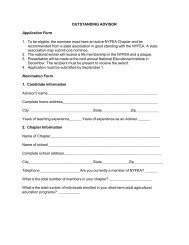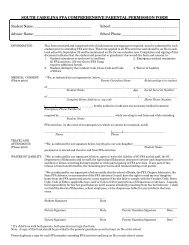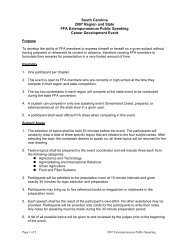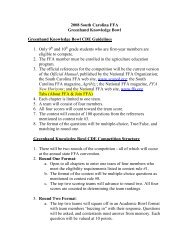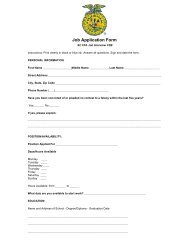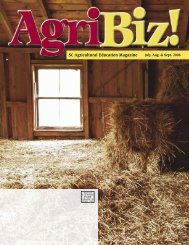DHI-202 Herd Summary
DHI-202 Herd Summary
DHI-202 Herd Summary
You also want an ePaper? Increase the reach of your titles
YUMPU automatically turns print PDFs into web optimized ePapers that Google loves.
18<br />
10. Current SCC <strong>Summary</strong>, 11. Dry Cow Profile, 12. Yearly <strong>Summary</strong> Entered & Left<br />
10. Current Somatic Cell Count <strong>Summary</strong> provides a herd 10<br />
analysis for milk quality and mastitis/udder health.<br />
<strong>Herd</strong> Production Lost From SCC This Test Period<br />
indicates the expected loss of milk and income due to the<br />
somatic cell count for the entire herd. These dollar values are<br />
based on research relating to production losses due to<br />
subclinical mastitis in relation to the somatic cell count. They<br />
do not include any quality premiums lost by the herd as a<br />
result of high cell counts.<br />
% Cows SCC Score - the % of first lactation, second<br />
lactation, third and greater lactation cows, and all cows in<br />
each of five somatic cell count score categories (0-3, 4, 5, 6,<br />
7-9) are listed. At least 25% of the milking cows must have<br />
somatic cell counts reported for this section to print.<br />
A large proportion of the herd should have SCC scores of 3 or less. A recommended goal is for<br />
70% or more of first lactation cows to have scores 0 to 3 while 55-60% of the entire herd should be in<br />
this category. No more than 7-8% of the entire herd should have an SCC score of 6 or greater. Dairy<br />
producers need to evaluate milking equipment, milking procedures and/or environmental conditions<br />
when relatively high percentages of cows score at SCCS 6 or higher.<br />
11. Dry Cow Profile includes the number of dry periods<br />
and average days dry for the last completed dry period<br />
for all cows in the herd. Information on second, third 11<br />
and later lactations is reported, as well as an average for<br />
all lactations. The dry periods are grouped by length: dry<br />
fewer than 40 days, dry 40-70 days, and dry over 70<br />
days. The length of the dry period has a significant<br />
effect on the subsequent lactation. Cows dry fewer than<br />
40 days or more than 70 days tend to produce less milk<br />
during the next lactation than herdmates that are dry an optimum of 50-60 days.<br />
12. Yearly <strong>Summary</strong> of Cows Entered and Left the <strong>Herd</strong> is a measure of herd turnover and herd<br />
replacement. The yearly 12<br />
period is comprised of the<br />
test periods printed in the<br />
Yearly Production and<br />
Mastitis <strong>Summary</strong> of the<br />
<strong>DHI</strong>-<strong>202</strong> (number of test<br />
periods closest to 365 days).<br />
Total cows in the herd on the<br />
current test day are used to<br />
calculate the % of cows<br />
entering and leaving the herd. “Voluntary” culling of low production cows and cows sold for dairy<br />
purposes (first two categories) are the most desirable reasons for culling. When large numbers of cows<br />
are culled for involuntary reasons (reproductive failure, mastitis, udder, poor feet and legs, injury,<br />
disease or death), “voluntary” culling is limited. Cow turnover for reasons other than low production<br />
or dairy purposes should be minimized.



